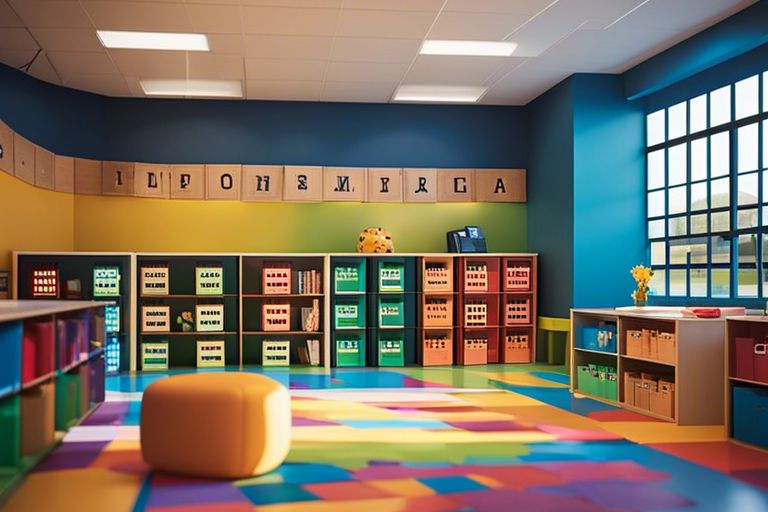Phonics, a method of teaching reading and writing by developing learners’ phonemic awareness, is a fundamental aspect of early education. As we move towards a more technologically advanced future, the landscape of phonics education is bound to evolve. In this blog post, we will explore the trends and predictions that are shaping the future of phonics instruction. From the incorporation of digital tools to the emphasis on personalised learning, we will probe into how phonics is adapting to meet the needs of 21st-century learners. Stay tuned to discover what the future holds for phonics education.
Key Takeaways:
- Increasing use of technology: Technology is expected to play a significant role in phonics education, with the use of apps, games, and interactive tools becoming more prevalent.
- Personalised learning: Phonics programmes are likely to become more tailored to individual student needs, allowing for better learning outcomes and more targeted support.
- Emphasis on early intervention: There will be a growing focus on identifying and addressing literacy issues at an early age to ensure that children develop strong phonics skills from the outset.
- Incorporating multi-sensory approaches: Future phonics teaching is expected to incorporate a variety of sensory experiences to cater to different learning styles and enhance overall learning effectiveness.
- Integration with broader curriculum: Phonics education is likely to be more integrated with other subjects and teaching practices to provide a holistic approach to literacy development.
The Evolution of Phonics Instruction
Historical Overview of Phonics
Phonics instruction has been a cornerstone of early literacy education for decades. Dating back to the 17th century, phonics has been used to help learners understand the relationships between letters and sounds in the English language. With roots in the work of literacy pioneers such as Isaac Pitman and Sir James Pitman, phonics has evolved over time to become a fundamental part of reading instruction in schools worldwide.
Recent Innovations in Phonics Teaching
In recent years, there has been a surge of innovative approaches to phonics teaching, driven by advancements in technology and cognitive science. Interactive phonics apps, personalised learning programmes, and multisensory teaching techniques have revolutionised the way phonics is taught in classrooms. These innovations aim to engage learners, cater to diverse learning styles, and enhance the effectiveness of phonics instruction.
Technological Integration in Phonics Education
Digital Platforms and Learning Apps
Digital platforms and learning apps have revolutionised the way children learn phonics. These interactive tools offer engaging activities that cater to different learning styles, making phonics education more accessible and enjoyable for young learners. With features such as audio pronunciation, interactive games, and progress tracking, digital platforms and learning apps provide a dynamic and effective way to reinforce phonics skills.
The Role of Artificial Intelligence
Artificial Intelligence (AI) is playing an increasingly significant role in phonics education. AI-powered tools can personalise learning experiences by adapting to individual student needs and providing targeted feedback. This technology can analyse student performance, identify areas for improvement, and offer tailored exercises to enhance phonics skills. By leveraging AI, educators can offer more personalised and efficient phonics instruction to support student learning and development.
Phonics in the Multilingual Context
Phonics Strategies for ESL Learners
When teaching phonics to English as a Second Language (ESL) learners, it is necessary to incorporate strategies that cater to their unique needs. Utilising visuals, real-life examples, and interactive activities can help ESL learners grasp phonics concepts more effectively. Additionally, providing ample opportunities for practice and reinforcement is crucial in supporting their development of phonemic awareness and literacy skills.
Cultural Considerations in Phonics Curriculum
Considering cultural diversity in the design of phonics curriculum is vital to ensure inclusivity and relevance for all learners. By incorporating diverse texts, names, and contexts into phonics lessons, educators can create a more engaging and relatable learning experience for students from various cultural backgrounds. Understanding the cultural nuances in language and pronunciation can also help educators tailor their teaching approaches to meet the specific needs of diverse learners.
Policy and Research Directions
Government Policy on Phonics Teaching
The government’s stance on phonics teaching is crucial in shaping the future of literacy education. With a continued emphasis on systematic synthetic phonics instruction in primary schools, it is expected that future policy will focus on ensuring teacher training and resources are aligned with best practice. Monitoring and evaluation of phonics teaching will likely remain a key priority to ensure that all children are equipped with necessary reading skills.
Future Research for Effective Phonics Instruction
Future research in phonics instruction is likely to explore innovative teaching strategies, assess the impact of technology on learning outcomes, and investigate the effectiveness of phonics interventions for diverse student populations. It is necessary for researchers to collaborate with educators to bridge the gap between theory and practice and ensure that evidence-based approaches inform phonics instruction in schools.
As advancements in technology continue to influence educational practices, researchers may also investigate the efficacy of digital platforms and adaptive learning tools in delivering personalised phonics instruction. Additionally, research on the long-term effects of phonics instruction on reading comprehension and academic achievement could provide valuable insights for policymakers and educators.
The Future of Phonics – Trends and Predictions
As technology continues to shape the educational landscape, phonics is expected to further evolve to cater to the needs of modern learners. The incorporation of interactive phonics apps, virtual teaching tools, and artificial intelligence in phonics instruction will likely become more prevalent. Personalised learning experiences tailored to individual students’ needs and abilities will also play a significant role in the future of phonics education. However, it is necessary to balance technological advancements with traditional teaching methods to ensure a well-rounded approach to phonics instruction. By adapting to these trends and predictions, educators can better equip students with the necessary phonics skills to excel in reading and literacy in the ever-changing digital world.
FAQ
Q: What is phonics?
A: Phonics is a method for teaching reading and writing that focuses on the relationship between sounds and their corresponding letters.
Q: Why is phonics important for early education?
A: Phonics is crucial for early education as it provides children with the foundational skills they need to become successful readers and writers.
Q: What are some current trends in phonics education?
A: Some current trends in phonics education include the use of technology, personalised learning approaches, and the integration of phonics into other subject areas.
Q: How can parents support phonics learning at home?
A: Parents can support phonics learning at home by reading with their children, practising letter sounds and blends, and creating a print-rich environment.
Q: What are some predictions for the future of phonics education?
A: Predictions for the future of phonics education include the continued use of interactive digital tools, a focus on early intervention for struggling readers, and a greater emphasis on phonics instruction in teacher training programmes.












